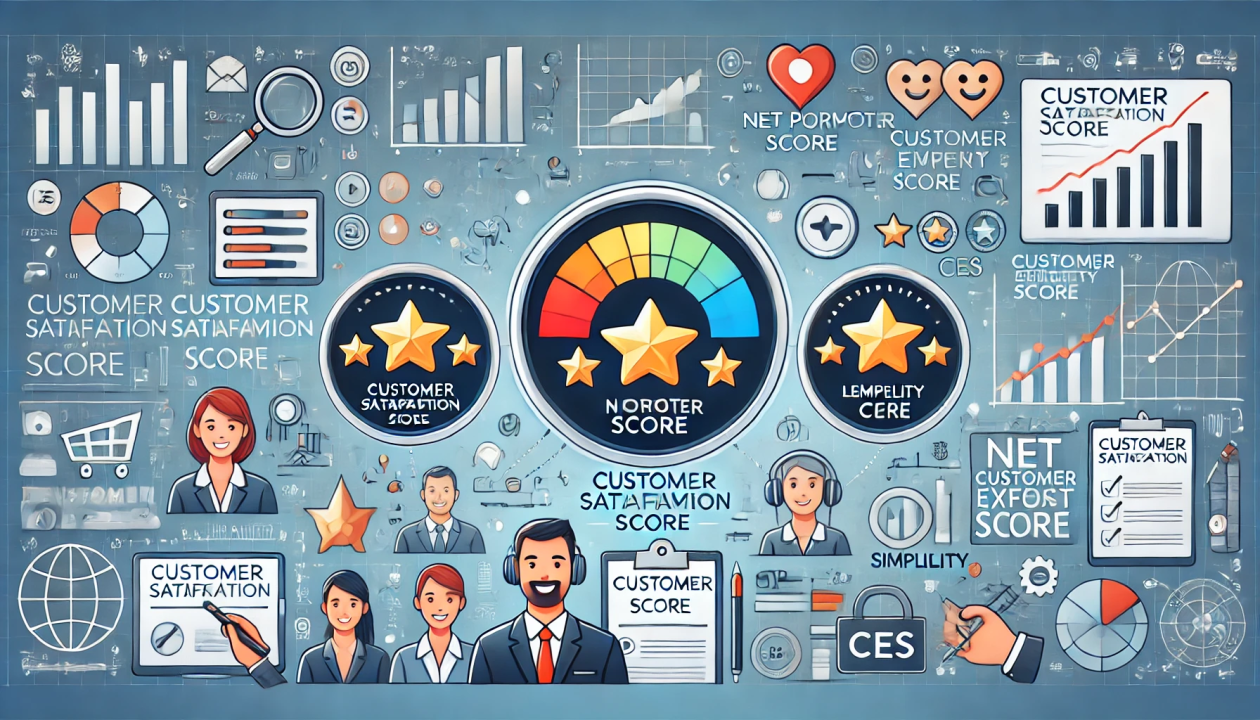
#3 Key metrics Customer Satisfaction measuring
Andrea Di Censo
?Digital transformation | CX expert | ??Value creation | VP CX Sales & Aftersales | ?? Join Customer Success playbook! newsletter.
?? Welcome Back to Your Customer Success Journey! ?? Reading Time: 5 minutes??
Hello, CX Enthusiast! ??
?In Week 2, we explored the power of customer journey mapping to understand your customers’ experiences and identify opportunities for improvement. This week, we’re zooming in on the key metrics that will help you measure customer satisfaction.
What Are Key Metrics for Measuring Customer Satisfaction? There are several critical metrics businesses use to measure customer satisfaction. These metrics help you quantify how your customers feel about your products, services, and overall brand experience. Let’s take a look at the three most popular metrics:
1. Customer Satisfaction Score (CSAT) : The Customer Satisfaction Score (CSAT) is one of the most straightforward ways to measure customer satisfaction. It asks customers to rate their experience with a product, service, or interaction. Typically, this is done with a simple survey after a key touchpoint (like a purchase or customer service call).
According to Frederick F. Reichheld, in his book “The Loyalty Effect,” CSAT scores can predict customer loyalty. Reichheld emphasizes that satisfied customers are more likely to remain loyal and recommend your business, making CSAT a valuable tool for tracking loyalty over time.
2. Net Promoter Score (NPS) : Net Promoter Score (NPS) is a powerful metric designed to measure customer loyalty and satisfaction by asking a simple question:
Fred Reichheld, who pioneered the NPS methodology in his book “The Ultimate Question 2.0”, states that businesses with higher NPS grow faster than their competitors. NPS isn’t just a measure of satisfaction, it’s a predictor of future growth.
3. Customer Effort Score (CES) : The Customer Effort Score (CES) measures how easy it was for a customer to complete a specific task, such as making a purchase or resolving a customer service issue.
In the book “The Effortless Experience” by Matthew Dixon, he argues that reducing customer effort is more important than delighting customers. Companies that focus on making interactions easy - seamless - for customers tend to have higher retention and satisfaction rates.
?Why These Metrics Matter? Tracking these key metrics allows businesses to:
领英推荐
How to Use These Metrics Together: Rather than relying on just one metric, businesses should use a combination of CSAT, NPS, and CES to get a more complete picture of customer satisfaction. Each metric provides unique insights:
Case Study – Online Retailer: Improving Customer Experience with CES and NPS
An online retail company struggled with high customer support costs and low repeat purchase rates. By using Customer Effort Score (CES) surveys, they realized that customers were frustrated with the return process. Many customers had to contact customer support multiple times just to process a return, making the experience cumbersome. At the same time, their NPS scores showed a large number of Detractors, particularly among customers who had tried to return a product.
By simplifying the return process (e.g., allowing customers to print a return label directly from their account), they were able to reduce customer effort and increase their NPS. A follow-up CES survey showed a 40% improvement in ease of returns, and the company saw a 15% increase in repeat purchases within three months.
?Key Takeaways:
?Looking Ahead: Next week, we’ll dive deeper into the importance of Voice of the Customer (VoC) programs and how gathering and analysing customer feedback can help drive innovation and improve your overall customer experience.
Engagement Questions: we want to hear from you! ??
Let’s continue the conversation – join the discussion on LinkedIn! ??
"Track what matters to improve customer satisfaction, build loyalty, and grow your business with actionable insights."
Best regards, Mot-EX Customer Experience Team
Customer Success Manager @ATP??. ICF Professional Coach, Mindfulness??
1 个月Hello Andrea, thanks for this very useful topic. I have a question about Csat and NPS. I experienced that CSAT is wonderful, but NPS results indicate the detractor and passive categories in some customer surveys. How can we explain these oppositive results? CSAT is high, but NPS is low. Is it normal???
Global Training Delivery Manager @Iveco Academy/ Innovative Leader and Team player
1 个月Davvero utile e ben fatto! Grazie Andrea